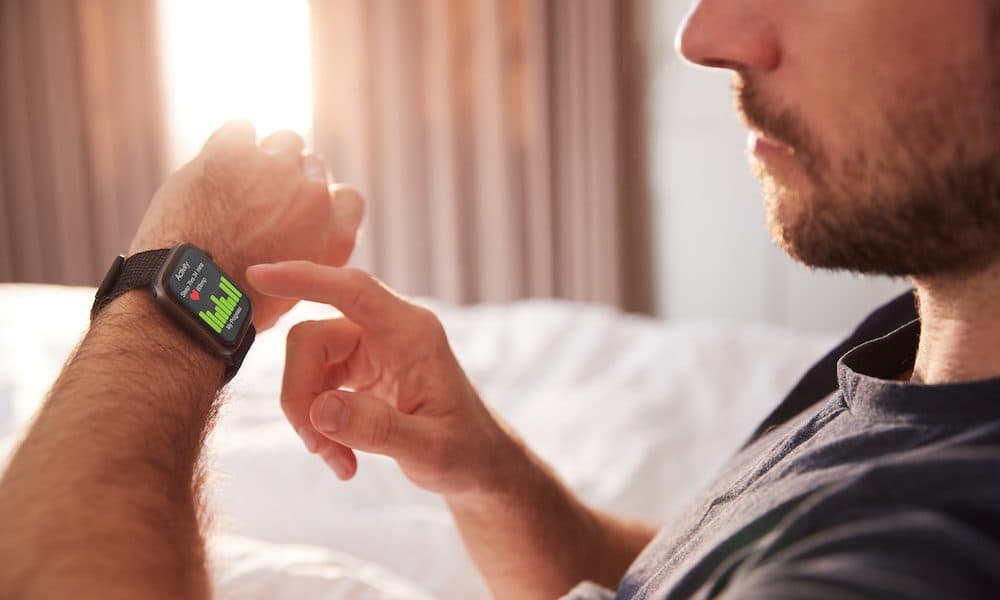
By Jack Latus, CEO of Latus Group
The world of work is changing rapidly and businesses must evolve – this is a timeless warning, but with innovations now more powerful, fast-paced and intuitive than ever, it’s one that’s never been more relevant.
But with one of the most significant shifts in modern life being the increasing adoption of health tracking technology, this simply isn’t translating as rapidly to the corporate world.
From iPhones and fitbits, to patches and nutrition diaries, usage is commonplace in society, but despite the pandemic showcasing the harm which absenteeism can bring, it still remains seemingly invisible in the workplace.
The question is, why?
The backdrop is stark.
UK Cabinet Office data revealed that the number of long-term sick days missed by Civil Servants has hit a post-pandemic high, while research by Sleep Action found that up to 50 per cent of employees struggle with sleeping difficulties leading to fatigue-related productivity losses that cost businesses an estimated £1,248 per employee annually.
Worse still, it found that sleep deprivation increased the risk of workplace accidents by 70 per cent.
These figures alone should be a wake-up call.
In today’s turbulent economy, employee health is no longer just a moral responsibility but a financial imperative for businesses wanting to succeed.
Proactive health strategies can reduce absenteeism by 20 to 30 per cent, saving companies significant costs, and research by Oxford University even found that improving workplace wellbeing can boost output by up to 21 per cent, resulting in fewer sick days and higher engagement.
In short, healthier employees mean healthier businesses and for your finance team, healthier profits.
Some industries have already embraced health tracking technology with open arms.
Construction and logistics sectors are obvious examples, using wearables to track fatigue levels and ensuring drivers and machine operators remain alert and capable, ultimately reducing the risk of incidents.

Jack Latus
In fact, workplace health tracking was even used in the early 20th century by the Ford Motor Company, who attempted to monitor workers’ lifestyles to ensure they met strict health standards in exchange for higher wages.
While this approach would be highly frowned upon today, even illegal, it provided a grounding for today’s health tracking technology to be implemented with a very different philosophy – one centered on empowerment rather than control.
BP America was another early adopter, rolling out a program in 2013 that provided employees with FitBit bracelets to monitor fitness, sleep quality and fatigue levels, and more recently, some businesses introduced wearable patches to monitor employees for early signs of Covid.
In short, as new technologies arrive, employers can gain real-time insights into staff wellbeing at a greater speed and accuracy than ever, from stress levels to cardiovascular risks, giving them insights to proactively support their teams, intervene early and offer tailored support before productivity suffers.
But despite the clear benefits, many industries are still failing to recognise the opportunity that wearable healthcare technology presents.
There is a lingering perception that ‘health surveillance’ is either suspicious in nature, or only effective in physically demanding industries. Yet we must remember that office workers are not immune to health concerns.
Long hours, high stress, and sedentary lifestyles contribute to chronic conditions like obesity, hypertension and mental health issues, and with employee burnout at record levels, we must advocate that health tracking could provide the insights needed to create a healthier work environment, and drive better economic growth.
Importantly for the C-Suite, the financial case is also undeniable, where companies are saving five to six figure annual cost outlays purely from performing health evaluations as standard practice, rather than emergency measures.
The World Economic Forum and McKinsey Health Institute also found that companies that invest in health see up to 55 per cent higher economic returns, and perhaps even more compelling, a hypothetical “Wellbeing 100” stock portfolio of the healthiest workplaces has outperformed major indices like the S&P 500 and Nasdaq since 2021, making it clear that wellbeing is not just a perk, it’s a strategic advantage.
With this in mind, we shouldn’t view health tracking technology as just a passing trend. It is a fundamental shift in how we approach workplace wellbeing.
A future where companies can predict and prevent burnout before it happens, and where HR teams can use real-time health data to design personalised wellness programmes for their staff members, is a future that can only ever be positive.
Of course, we can’t dismiss the notion that some employees may be wary of sharing their personal health data with their employers, or a ‘big brother’ effect taking hold.
We’ve seen this hit the news with the case of egg-freezing and women’s health monitoring brought in by some Silicon Valley corporations, and the concern is not unfounded.
Without the right regulations and strict data privacy measures, where data is kept private from wider departmental scrutiny, there is potential for abuse, misuse or discrimination and tighter laws and international agreements must be in place if we are to roll out tracking on a global level.
However, with the right balance of privacy, regulation and implementation, businesses can create environments where employees feel confident to embrace these technologies rather than fear them, helping them to feel more valued, engaged, and, most importantly, healthy.
In fact, a 2017 AXA Health Tech & You survey found that 57 per cent of employees would be willing to wear a health tracker if provided free of charge and under clear privacy protections.
With the rapid advancements in technology, and the natural integration of fitness trackers in every personal use, I can only imagine the results if the same research were to be repeated today.
With innovation driving every aspect of business in today’s connected world, incorporating technology is no longer optional, but essential if we aim to build resilient companies and fuel a thriving economy.
In a landscape where competitive advantage is key, investing in these technologies stands out as one of the most strategic decisions a company can make.
The real question is, which leaders have the foresight and boldness to embrace these advancements for the positive, and become studied as success stories of the future.





